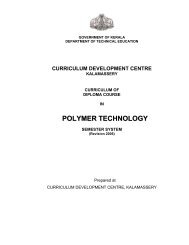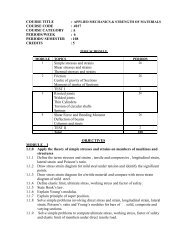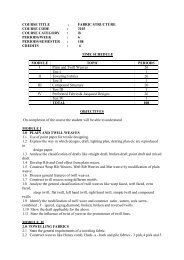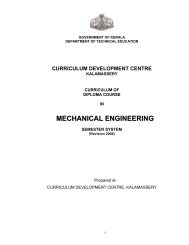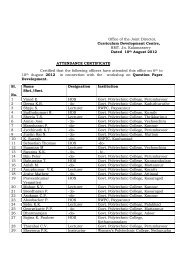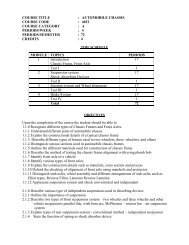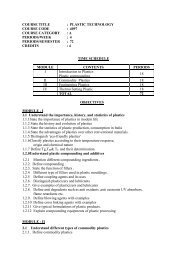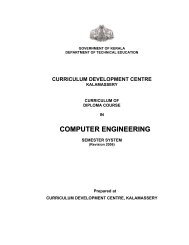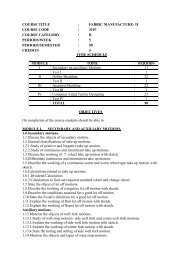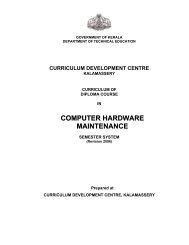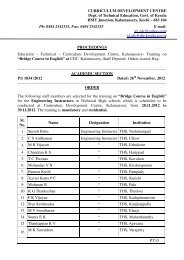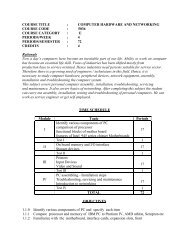13 - Curriculum Development Centre, Kalamassery
13 - Curriculum Development Centre, Kalamassery
13 - Curriculum Development Centre, Kalamassery
- No tags were found...
Create successful ePaper yourself
Turn your PDF publications into a flip-book with our unique Google optimized e-Paper software.
2.3.15 Explain the terms a) ‘enthalpy’ H & ^H b) entropy S & ^S2.3.16 Describe spontaneous & non-spontaneous processes with suitable examples.2.3.17 State 2nd law of thermodynamics2.3.18 Explain Gibb’s free energy G & ^G2.3.19 Derive the mathematical expression (only) for Gibb’s – Helmholtz equation2.3.20 State 3rd law of thermodynamicsColloids2.4.0 Comprehend the methods of preparation, the properties & some industrialapplications of colloid2.4.1 Define ‘colloids’2.4.2 Illustrate the different types of colloids with examples.2.4.3 Describe the method for the preparation of Fe(OH)3 sol2.4.4 Describe Bredic’s Arc method2.4.5 Describe the purification of colloids by Dialysis2.4.6 Describe the properties 1) Tyndall effect 2) Brownian movement 3) electrophoresis 4)coagulation2.4.7 State Hardy-Schultze rule & explain with examples.2.4.8 Define Gold-No2.4.9 Describe the industrial applications – 1) smoke precipitation 2) sewage treatment 3)purification of drinking waterUNIT – III ORGANIC CHEMISTRYIntroduction to organic chemistry3.1.0 Understand the fundamental ideas of organic chemistry3.1.1 List the differences between organic & inorganic compounds3.1.2 Describe the uniqueness of carbon atom3.1.3 Define ‘catenation’3.1.4 Distinguish between saturated & unsaturated compounds3.1.5 Illustrate general classification & that based on functional groups3.1.6 Define isomerism – explain with simple examples onlyPolymers3.2.0 Understand the nature of some industrially important polymers3.2.1 Define polymerization3.2.2 Distinguish between addition & unsaturated compounds3.2.3 Differentiate between thermoplastics & thermosetting plastics3.2.4 Outline the merits & demerits of plastics3.2.5 Distinguish natural rubber from synthetic rubber with suitable examples3.2.6 Explain vulcanization & its merits3.2.7 Define “fiber”3.2.8 Describe different types of fibers with suitable examplesPaints, varnishes, adhesives & lubricants3.3.0 Appreciate the requisites of good paints3.3.1 Name the constituents of paints – vehicle, pigment & other additive3.3.2 Identify the role of various additives – acrylics, polymethanes, fillers, plastizisers,driers, antiskinning agents (one examples each)3.3.3 List the two types of varnishes & their constituents3.3.4 State the common uses of varnishes3.3.5 List the various constituents of varnish3.3.6 Explain the principle of lubrication3.3.7 List the types of lubricants – with one example each3.3.8 Define ‘adhesives’3.3.9 List the two types of adhesives3.3.10 State the applications of 1) paper adhesive 2) wood adhesive 3) metal bondingadhesive 4) break & clutch bonding adhesive 5) printed circuits32



